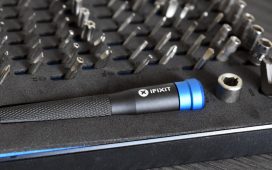If I had to guess, I’d say Apple sold fewer than 1,000 Mac Pros last year. Between the long wait for Apple silicon, the arrival of the Mac Studio, and the lack of meaningful upgrades, Apple’s most expensive Mac likely only sold to the most desperate or unaware Apple buyers.
That wasn’t supposed to be the case. When John Ternus teased the Apple silicon Mac Pro for “another day” at Apple’s Peek Performance event last March, he seemed to give a nod and a wink to the most fanciful rumors of a machine significantly greater than the just-announced Mac Studio and its massive M1 Ultra chip. Fast-forward 10 months, and we’re still waiting for the Apple silicon Mac Pro to arrive.
The safest bet would be the new Mac Pro arriving at WWDC, where the past three models made their debut in 2006, 2013, and 2019. Apple likes to make a big splash with its Mac Pro, and the WWDC keynote is the perfect place to do it, with a captive audience of users ready and willing to spend $5,999 on a Mac “designed for pros who need the ultimate in CPU performance.”
However, while there’s little doubt that the new Mac Pro will again take its rightful position at the top of the Mac pyramid, the speed gains might not be anywhere near as impressive as previous models. When the M1 Ultra brought a whopping 20-core CPU and 64-core GPU to the Mac Studio, rumors began swirling of an “Extreme” chip with an insane 48 CPU cores and 152 graphics cores, more than twice as powerful as the upper-end Mac Studio. It would be the ultimate display of Apple silicon’s strength and usher in a new Mac Pro generation that has few if any peers. Now, a report by Mark Gurman of Bloomberg claims that Apple has canceled the workstation-class “Extreme” chip and will settle for a slightly souped-up Ultra processor instead.
That’s still fast, mind you, but the difference between it and the Mac Studio–even if it stays with an M1 chip for another year–won’t be as large as we hoped. So if the Mac Pro isn’t the fastest Mac you can buy now and the new model won’t be significantly faster when it launches later this year, why does it even exist?
Identity crisis
According to Gurman’s report, the Mac Pro will feature an M2 Ultra processor with a 24-core CPU and 76-core GPU, the same case design as the current model, and “slots” for storage, graphics, media, and networking cards but not memory. (It’s not entirely clear how graphics expansion would work with Apple’s system-on-chip, but Gurman had previously reported that the Mac Pro would have “easy expandability for additional memory,” so it’s possible his source is wrong on the support for graphics cards.) Expansion is obviously important for the Mac Pro, but with the 40Gb/s speed of Thunderbolt, internal upgrades aren’t as important anymore. And the lack of aftermarket RAM upgrades means Apple doesn’t make any Macs with user-upgradable memory.
But the larger question is, what’s the identity of the Mac Pro? Over the past decade or so, the Mac Pro has consistently been Apple’s most innovative and powerful desktop machine, from the fascinating yet frustrating cylinder to the current model’s state-of-the-art thermal architecture and $699 wheels. As the Apple silicon transition has rolled on, however, the Mac Pro has become less and less relevant and worthy of its price, and it’s in desperate need of a rejuvenation, one that we assumed was on the way.

The Mac Studio is as fast as a Mac Pro and can fit under a Studio Display.
Willis Lai/Foundry
But if the new model is only a little faster than the Mac Studio and a little more expandable than, say, the MacBook Pro, it’s not really a Mac Pro is it? Over the course of the Apple silicon transition, Apple has already killed the iMac Pro and the 27-inch iMac without so much as a farewell, and the Mac Pro seems to fit the same logic: a vestige of an older era that doesn’t live up to its own legacy. After the 24-inch iMac and MacBook Pro got impressive redesigns to accompany their new chips, I assumed the first Apple silicon Mac Pro would be something radical and revolutionary, needing years of development and a proper introduction to cap the transition.
After all, that’s what the Mac Pro should be. If it’s not, again I ask, is it really a Mac Pro?
I had previously mused that the Mac Studio was a stop-gap machine meant to fill the space between Mac Pro updates, but now I’m not so sure. I assumed the Apple silicon Mac Pro would be nothing short of a breakthrough, with a new class of processor, a radically new form factor, and a new identity that put it back on the map. Apple had an opportunity to blow our minds with the design and speed of the Mac Pro and take its MPX modules to the next level, but if it doesn’t, maybe the Mac Studio is all the pro Mac we need.
Assuming the price of the Apple silicon Mac Pro remains at $5,999 and is only about 30 percent faster than a maxed-out Mac Studio, it’s hard to see why anyone would spend another $1,000 for a larger case and internal expansion. Apple already sells the Mac Studio with “breakthrough performance, a wide range of connectivity for peripherals, and a modular system to create the perfect setup,” so if the Mac Pro doesn’t bring a massive leap in performance, design, and expandability, who do both need to exist?
We might not ever get that answer. Based on the Mac Pro’s update cadence, the model that Apple released this year will likely still be around in three years. If Apple has a hard time justifying its existence now, how is it going to look in 2026? If the rumors are correct and Apple wanted the Mac Pro to be something much bigger than it’s going to be, maybe it’s best to simply remove it from the lineup rather than keep its name and nothing else.











